VENUS Gallery 102

To the Eternal City with love






VENUS Gallery is a WorldcApp initiative. WorldcApp is the CoMarketing platform that allows media and b2c companies to join complementary forces and win competitive advantage. It is based on a unique climate of fair and meritocratic competition between creative contents. Now Creativity also has its World Cup!
Sponsor: Taslaq World (www.taslaq.world) is a joint venture between Jamal Taslaq and WorldcApp. The combination of their cooperative technology with that of Tailoor, part of Reda Group, for made-to-measure configuration and customization, is astonishingly greater than the sum of its parts. In fact, by starting from the best Haute Couture creations, advanced CoMarketing practices and a new phygital e-commerce approach applied to tailor-made men’s fashion, they will tell the Jamal’s fascinating story through the lifestyle it inspires.
Front Cover & Retro Cover: M. Kovelman and O. Kiyashko by Irina Dzhul

Copyright:
All contents in this issue belong to their respective owners. Reproduction of these contents, without the explicit consent of the legitimate owners, is prohibited.
Address and Contacts:
Bastioni di Porta Nuova, 21 20121 Milan (MI), Italy
www.venus.gallery - info@venus.gallery

WorldcApp.com - info@worldcapp.com
VAT number: 10987970968
Legal: WorldcApp.com/legal
Printed by Blurb.com
Milan 2023




After 23 years spent experimenting with the best of Italian craftsmanship and a creative journey that led him from Nablus in Palestine to a fashion show at the United Nations headquarters in New York, the international haute couture designer Jamal Taslaq decided to celebrate his beloved Rome.
On Sunday 12 February, The Cardinal Colonna Gallery of Colonna Palace in Rome was, at the same time, the catwalk for the presentation of Jamal Taslaq’s new ETERNAL Collection and the stage for the market launch of a major project uniting peoples, cultures, traditions and innovations: Taslaq World.
www.jamaltaslaq.com

Galleria del Cardinale Colonna
Rome (Italy)
Location








The event was introduced by Sergio Strozzi, Consul General in San Francisco, to support the initiative from the Italian Innovation and Culture Hub in Silicon Valley.
In the new set-up, Taslaq World - the joint venture with WorldcApp - will be next to Jamal Taslaq Couture to complement the Italian-Palestinian designer’s offerings - so far mainly dedicated to capturing the interest of women from all over the world; from Queen Rania of Jordan to Sharon Stone, to name a few - with made to measure men’s fashion.
Over time, Taslaq World will expand its horizons to include everything an artist like Jamal Taslaq can conceive and create.




Statuesque dresses, black and white to dominate the scene and shades of green and red to enrich it; fine fabrics, embroidery with geometric lines worked with silk thread, mirrors and crystals; leather inlays, contrasts creating harmony between colours, shapes evoking the Roman Empire and the related contaminations observed by Jamal as a child in the Middle East, merged to allow great models to show and honour the Eternal City.
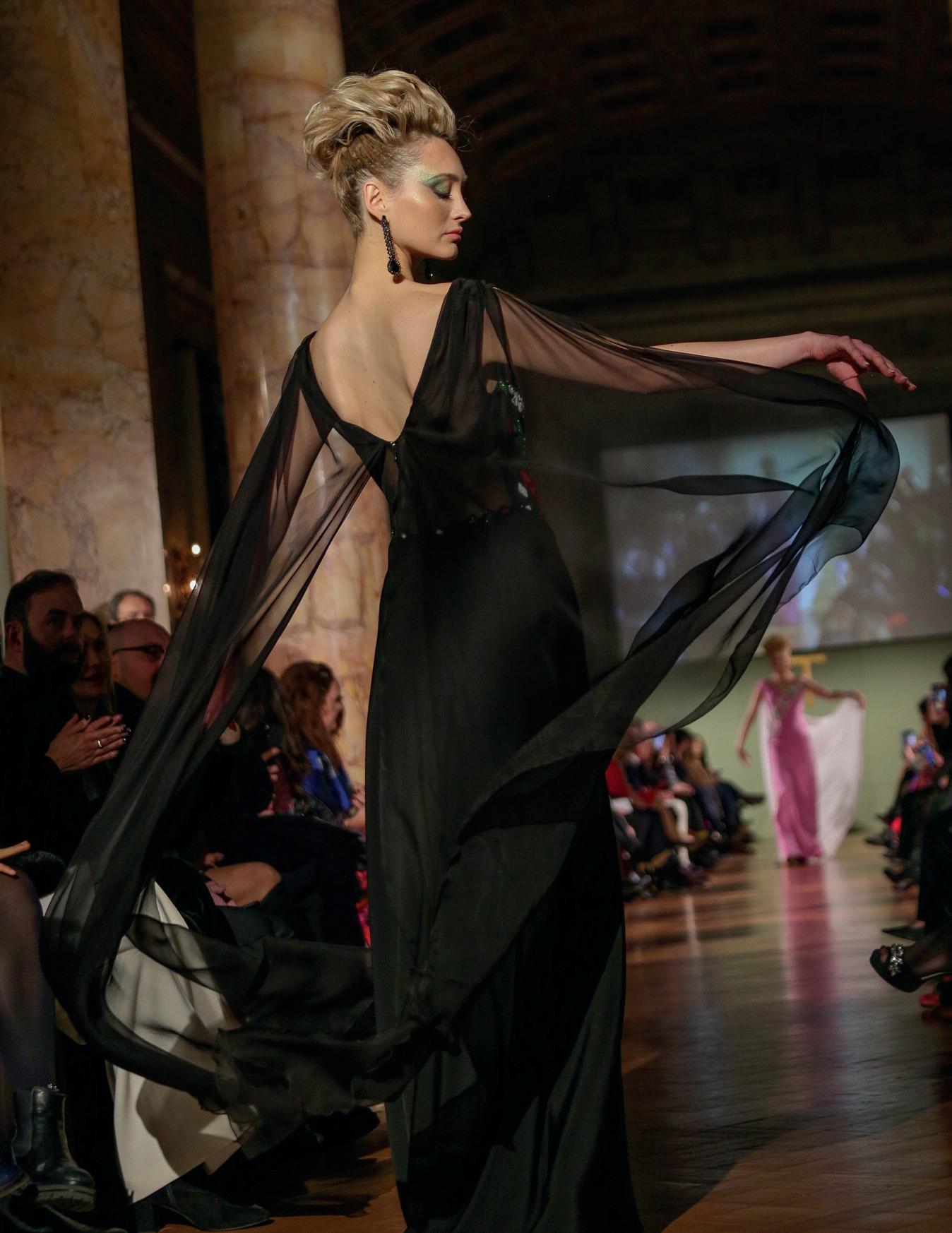


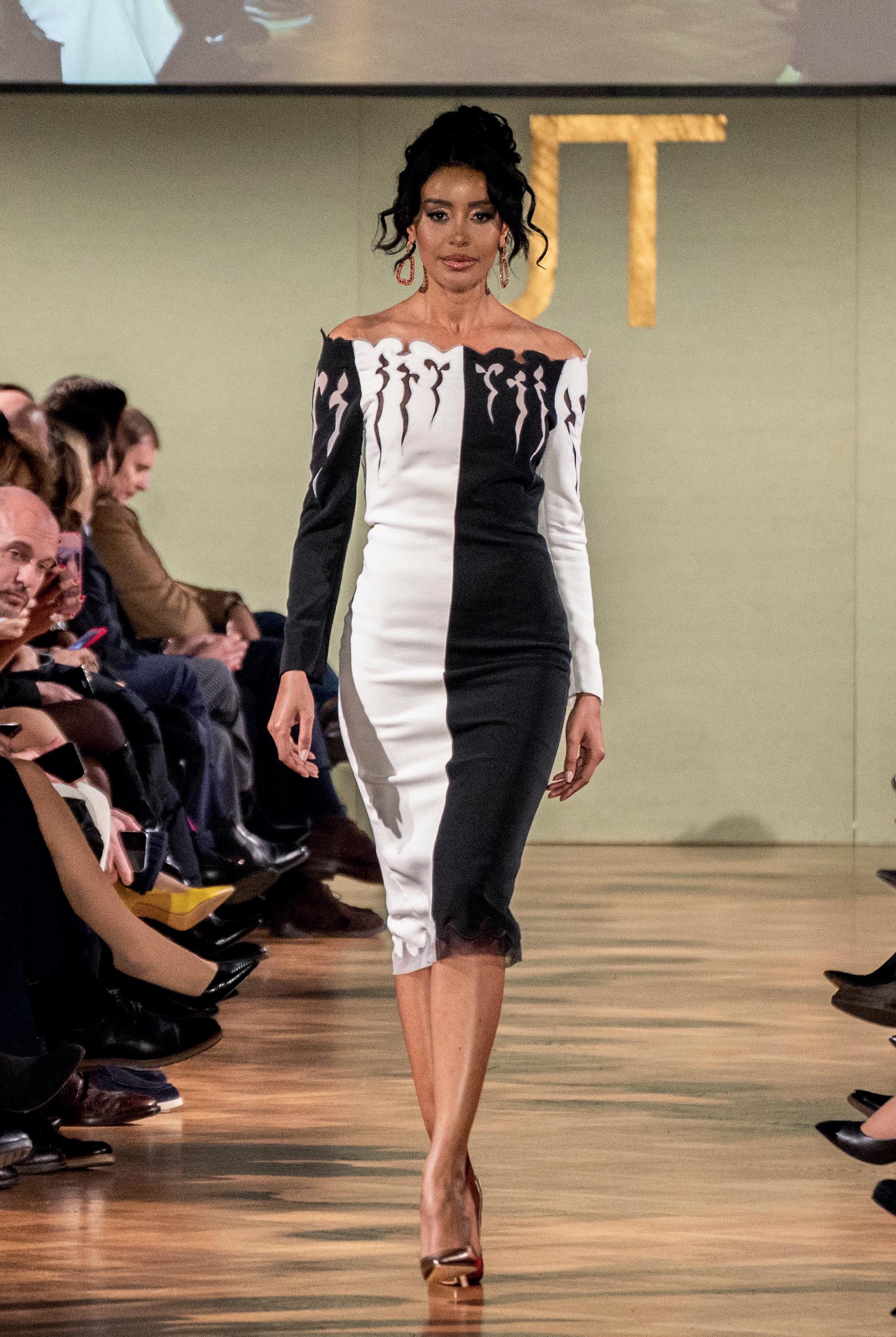

Mediterranean colours, references to the designer’s homeland, and Italian culture will continue to mingle in order to be re-proposed in a modern key and reach an even wider public.
The Made in Italy beauty that will result will not be an end in itself, it will represent a lifestyle rich in content and will nourish a prestige capable of transcending economic activity to place itself at the service of anyone who wants to contribute to dialogue and harmony.


From the Eternal City to the World with Timeless Style
A Taslaq outfit is a prestigious fusion of past and future, East and West; a tale of art and inclusiveness, majestically made with Italian craftsmanship.
The ETERNAL collection is an event held in Rome every year and replicated all over to show, through Haute Couture, that the beauty than comes from creativity and culture can bring people together on a higher level and has really the potential to save the World.
The ETERNAL men’s collection is a manifesto of values, principles and rules that will last forever and that is introduced at each event; an occasion for the contemporary man to develop his own timeless style; an opportunity for a new generation of influencers to emerge as image consultants.
www.taslaq.world


“Photography before photography” is the segment of painting pushed aside by the advent of the camera.
The actual provision of that form of expression was secured by patrons. They were wealthy and influential people who decided to employ some of their resources to produce art and guarantee that the artists behind it could make a living.
Patronizing art production was a means to build and foster their social status and reputation. The life of Elizabeth I, Queen of England, is the perfect example that makes it evident.
See Photography before Photography - Portrait of a Queen page 102

[...] The photographers’ motto was: precision, speed, cheapness. These were their advantages. Here they could compete with painters. Particularly in the case of portraits. Even the most gifted painter cannot achieve the degree of faithful reproduction of which the camera is capable. Even the quickest painter cannot supply a portrait within minutes. The cheapest painting is more expensive than the most expensive photograph. The painters recognised the danger. The success of photography was enormous. Immediate steps had to be taken. [...]
Osip Brik, in Sovetskoie Foto, no. 2, 1926.Art in theory 1900 - 2000
editedby
C. Harrison & P. WoodSee Photography VS Painting page 110
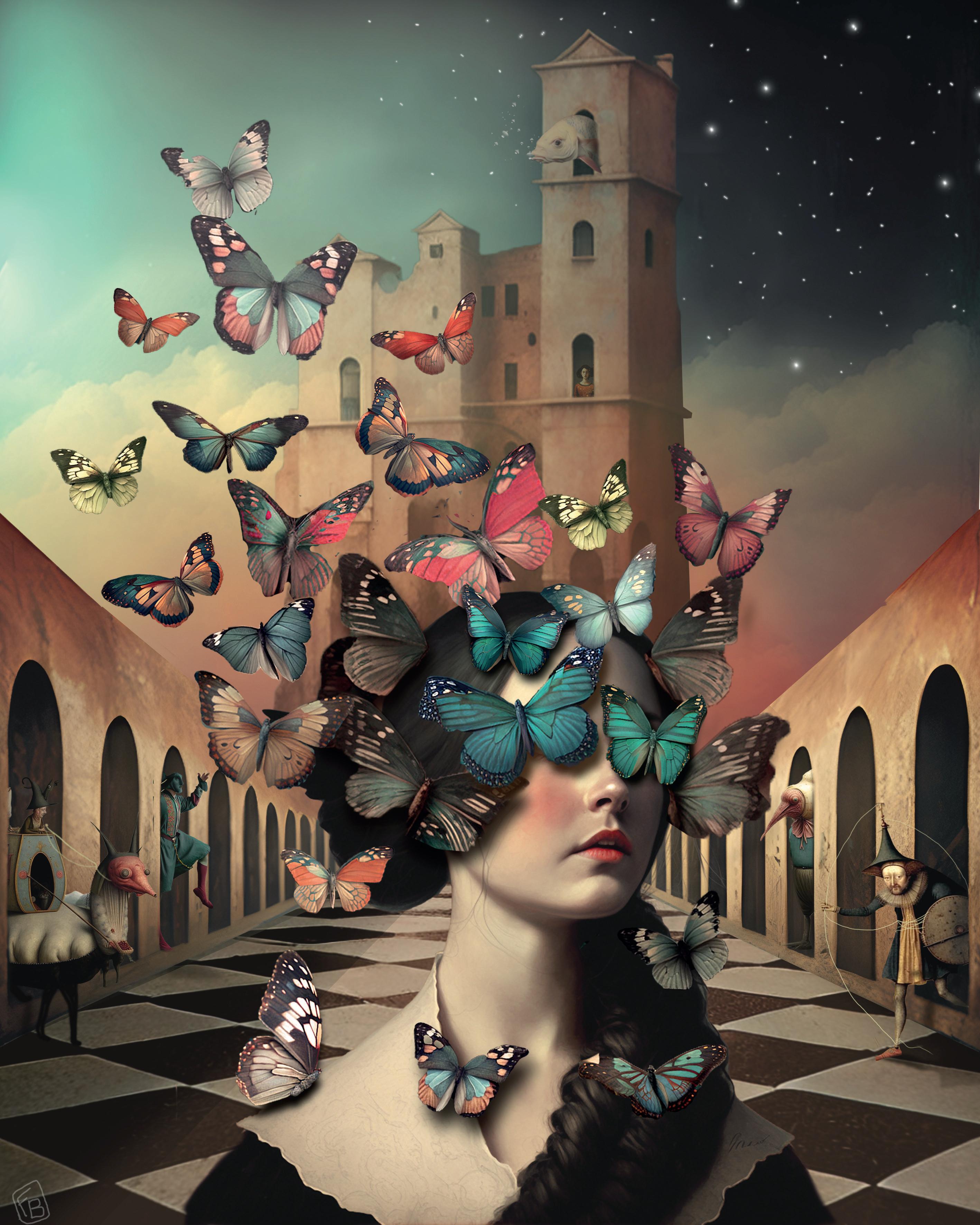
Nobody ever discovered ugliness through photographs. But many, through photographs, have discovered beauty.
Except for those situations in which the camera is used to document, or to mark social rites, what moves people to take photographs is finding something beautiful (The name under which Fox Talbot patented the photograph in 1841 was “the calotype”: from kalos, beautiful).
Nobody exclaims, “Isn’t that ugly! I must take a photograph of it.” Even if someone did say that, all it would mean is: “I find that ugly thing... beautiful”.
It is common for those who have glimpsed something beautiful to express regret at not having been able to photograph it.
So successful has been the camera’s role in beautifying the world that photographs, rather than the world, have become the standard of the beautiful.
From “On photography” by Susan Sontag, 1973
See Photography and Culture page 114

The so-called web2.0 is full of creatives of all types and sizes. The reason behind it is a combination of 2 factors:
1. technology to produce content is affordable for many,
2. once you have content, you can build an audience with it through social networking.
Now with the advent of the web 3.0 and in particular with what we like to call Augmented Creativity - AI applied to creativity - their capacity to create contents will be even multiplied. An unprecedented wave of creativity will flood the world of culture to inspire and enrich our lives.
We’ve invited Martin Wagner (Whitecat PhotoartFacebook.com/Whitecat.Ai.Works) to publish his Womancentered Art Photography, powered up with AI, here on VENUS Gallery to show some of the potential of the upcoming phenomenon. See Photography and Artificial Intelligence page 117

Building a platform (not just a magazine) contributing to unveiling that beauty is the tip of a huge (cultural) iceberg which has the potential to become an engine for the economy, society and innovation!
See Vision page 125

At VENUS Gallery, we devised a strategy that intends to accomplish the mission of reaffirming photography centred on female figure - and developed according to all formsas an artistic and cultural phenomenon.
See Mission page 130

The female figure has always been the most popular and loved subject in the history of art.
However, what really matters isn’t the abundant works of art produced around women but their natural ability to go well beyond the stories that artists were supposed to represent and become a way to tell the history of the entire world.
The Venus of Milo, Botticelli’s Birth of Venus, Leonardo da Vinci’s Mona Lisa, Picasso’s Demoiselles d’Avignon or Andy Warhol’s Marilyn are just some examples we can do to see it into practice.
That’s why we regard VENUS Gallery as the perfect introduction for a new editorial project dealing with 360 degree beauty: SHINY Media.
See Mission page 130

“To dismiss The Pirelli Calendar as a collection of ‘pin-ups’ would be to misunderstand its role and its cultural weight. It may have begun as a homage to world-famous beautiful women, but it has long segued into a destination for impactful storytelling and progressive thinking.
And for that reason, it’s culture resonance will only continue to endure.”
Pandora Sykes
(Journalist and broadcaster from London) source: pirellicalendar.com
I photograph what I do not wish to paint and I paint what I cannot photograph.















(Man Ray)


If I could tell the story in words, I wouldn’t need to lug a camera.


(Lewis Hine)

I photograph to find out what something will look like photographed.


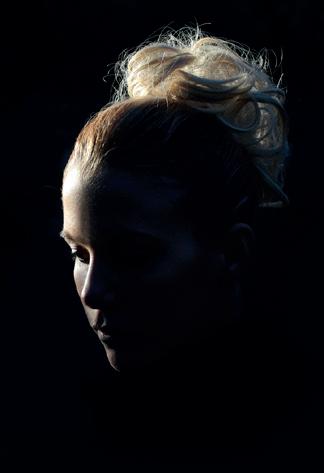




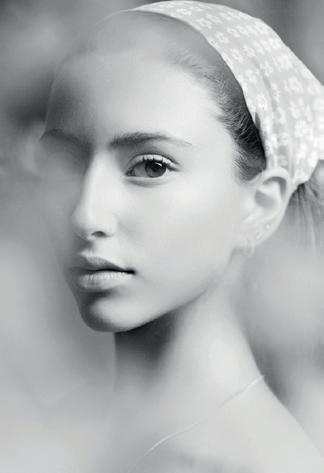





(Garry Winogrand)
New forms in art are created by the canonization of peripheral forms.




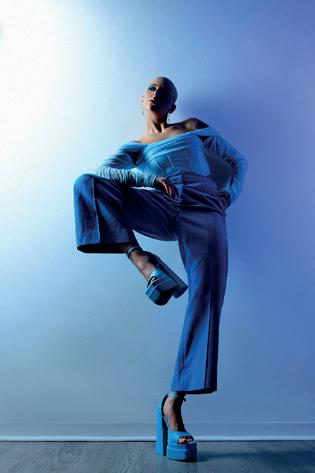
(Viktor Shklovsky)


VENUS Gallery comes after a long journey. We took “pictures” of it: Photography before photography, Photography vs painting, Photography and culture and Woman-centered art photography. You can see them them by flicking through the magazine.
There is a revolution underway characterised by an explosion of the pool of photographers. Low-cost (but amazing) technology and social networking enable them to challenge the traditional production and consumption of photography.
On the other hand, the diffusion of and expantion of communities where members interact on the basis of non market-mediated exchanges is laying the foundations for opportunities and threats at the same time.
VENUS Gallery is the platform to take full advantage of this unprecedented phenomenon. Models, artists, influencers, brands and all other stakeholders in the field, can multiply their chances to work together and meet the community: users who show a keen interest and involvement in the woman-centered art photography and in the world of creativity in general.









Evolet
Guzman Zamudio
Photographer
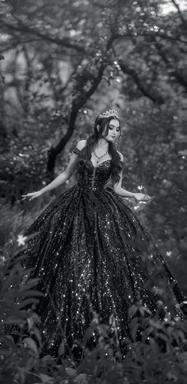
Maribel Alvarez
Indra Guízar

Make-Up
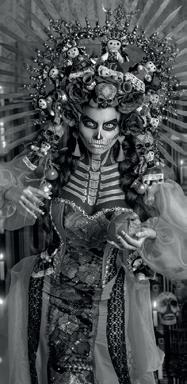


Adamari
Ruby Vizcarra
Georgina Villa Nueva
Models
Moroleón
Guanajuato (Mexico)
Location

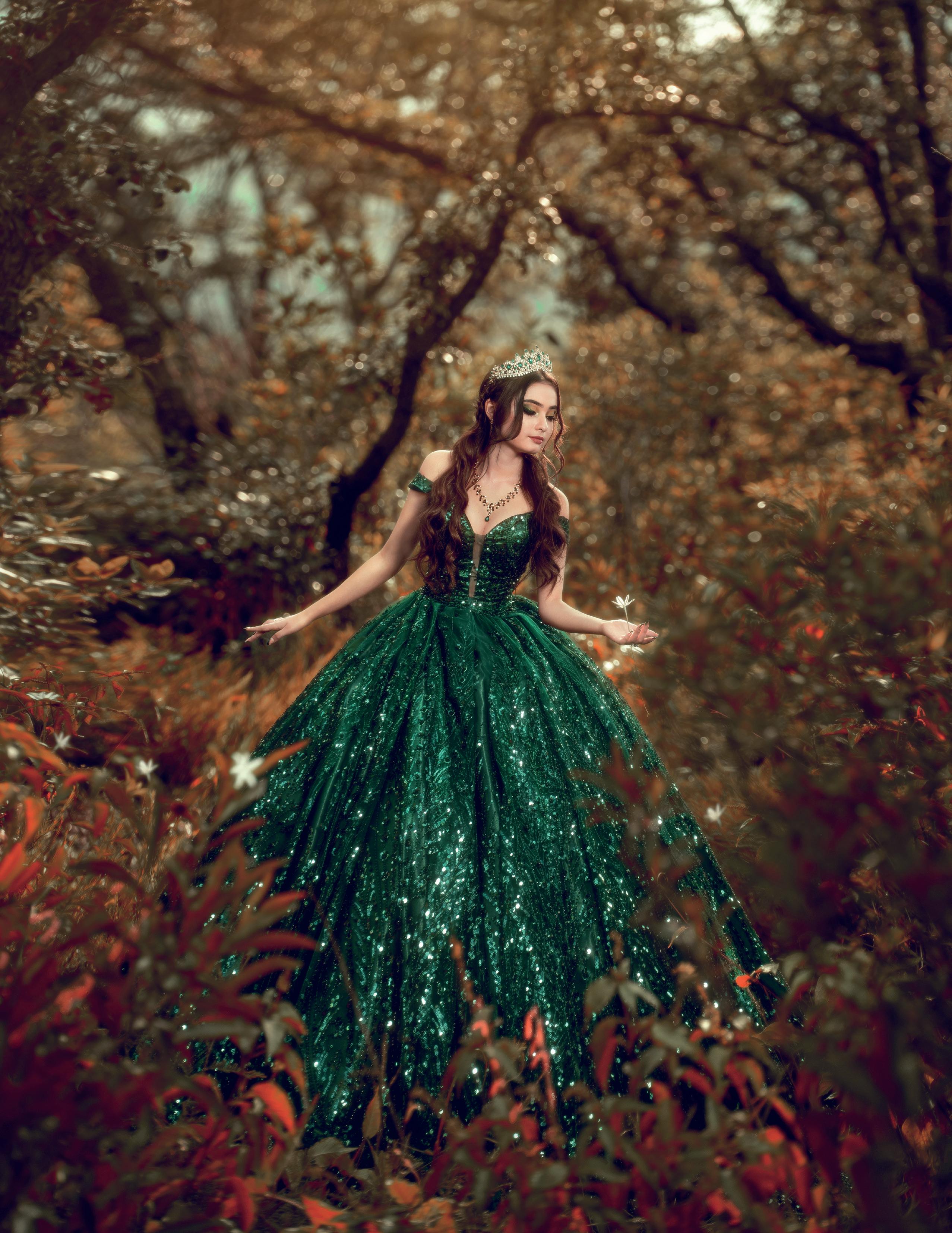

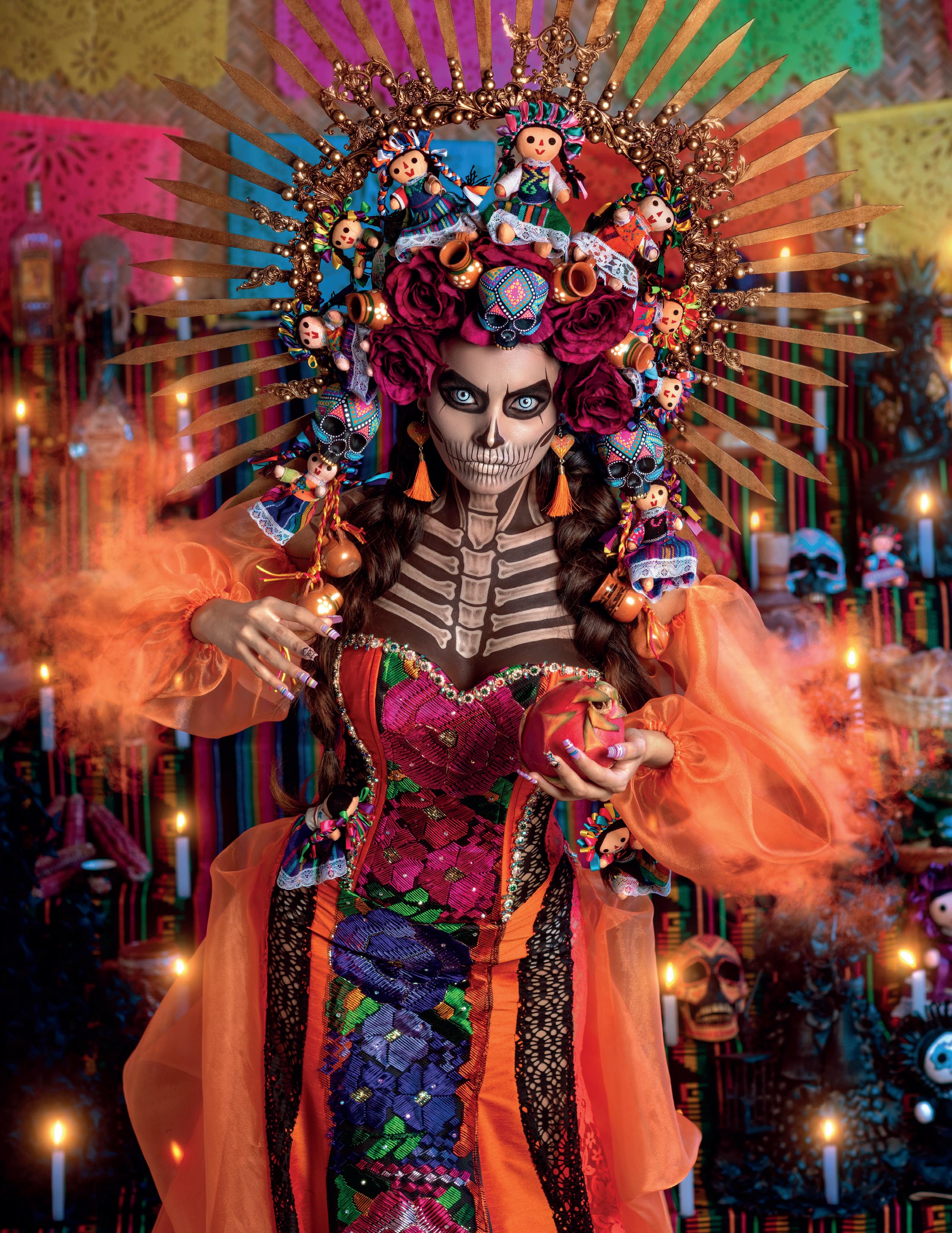

Make-Up




Make-Up










 La Spezia (Italy) Location
Thomas Capasso Photographer
Michela Triulzi Model
La Spezia (Italy) Location
Thomas Capasso Photographer
Michela Triulzi Model
Make-Up
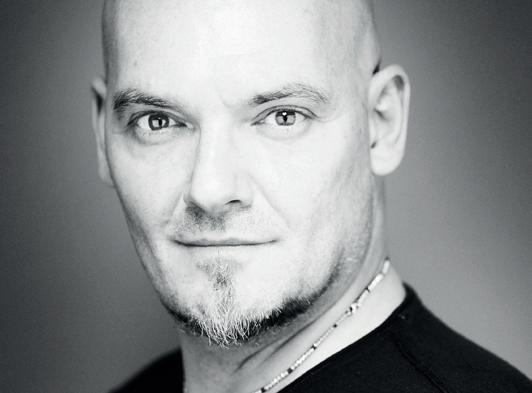


 Bassano del Grappa (Vicenza) Italy
Location
Gianluca Moretto Photographer
Mendy Moss Model
Mendy Moss
Bassano del Grappa (Vicenza) Italy
Location
Gianluca Moretto Photographer
Mendy Moss Model
Mendy Moss


Culture isn’t a form of entertainment restricted to a limited few. It isn’t an area dominated by an élite, nor is it a hat that we put on in order to show the world just how smart we are. It isn’t a diploma or a certificate that gives others an idea of just how many museums we’ve visited, or how many books we’ve read. Above all, it is not a pedestal from which to look down on others with some sort of sense of superiority.
Yet all too often we come across examples like these.
When we talk about culture, we refer collectively to manifestations of the excellence of human intellect - spanning art, science, design, photography, etc… - that are all ranked on an equal footing.


There’s no longer any call for an ‘A’ class and ‘B’ class distinction. The choices that we make should be driven by our own interdisciplinary curiosity alone and not by outdated classifications and contrasts between what we often referred to as highbrow and lowbrow culture.
Amsterdam (Netherlands) Location

 Irina Dzhul Photographer
Flavia Sbardella Model
Irina Dzhul Photographer
Flavia Sbardella Model
Francesca
Prezzavento
Photographer

Malì Beachwear

Fashion Designer
Valeria Nicotra
Model
Stefania Baldoni

Make-Up

Paolo Costarelli
Hair Style

Gattopardo House Catania (Itay) Location

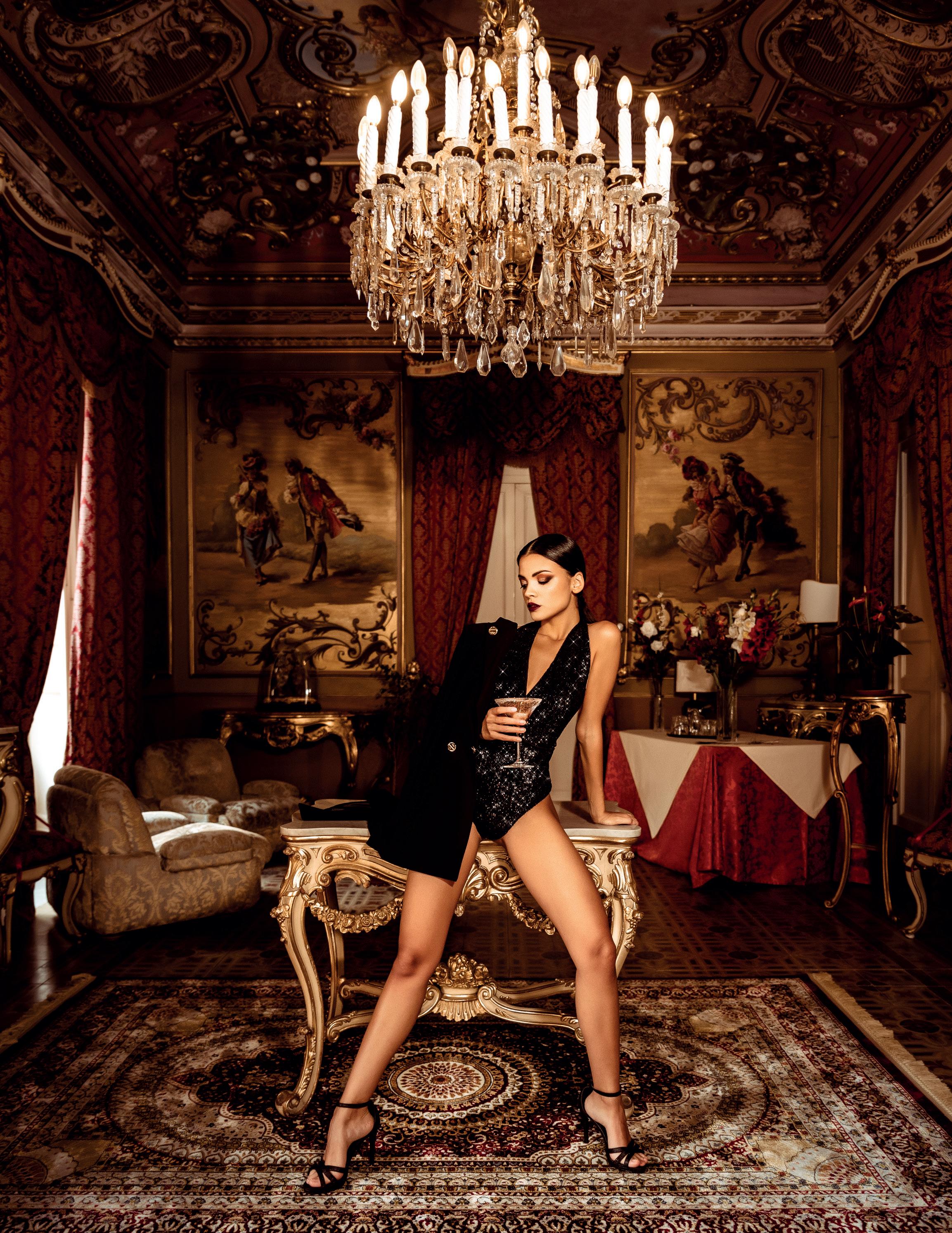




 Location
Monica Bremstar Photographer
Ibiza Altea Model
Alessia Luminari
Location
Monica Bremstar Photographer
Ibiza Altea Model
Alessia Luminari
Lada Poznyakova
Models

Lada Poznyakova

Make-Up


Rome (Italy)
Location
 Alex Comaschi Photographer
Jennifer Mazza
Jennifer Mazza
Alex Comaschi Photographer
Jennifer Mazza
Jennifer Mazza






 Orenburg (Russia)
Location
Anton Plotnikov Photographer
Valeria Rubtsova Model
Tanya Ivanova
Orenburg (Russia)
Location
Anton Plotnikov Photographer
Valeria Rubtsova Model
Tanya Ivanova


Make-Up





Amsterdam (Netherlands)



 Location
Nick Van Dijk Photographer
Eva Model
Location
Nick Van Dijk Photographer
Eva Model





 Avellino (Italy)
Location
Amedeo La Rossa Photographer
Giulia Longobardi Model
Rosa Sicignano
Avellino (Italy)
Location
Amedeo La Rossa Photographer
Giulia Longobardi Model
Rosa Sicignano
Make-Up



 Sabi Sabi Heart Lodge (South Africa)
Location
Andrea Varani Photographer
Giovanna Gorassini Model
Lorenzo Cherubini
Sabi Sabi Heart Lodge (South Africa)
Location
Andrea Varani Photographer
Giovanna Gorassini Model
Lorenzo Cherubini





 Helsinki (Finland)
Location
Sami Turunen Photographer
Oona Antila Model
Helsinki (Finland)
Location
Sami Turunen Photographer
Oona Antila Model
Make-Up



 Catania (Italy)
Location
Antonella Cunsolo Photographer
Bianca Rapisarda Model
Bianca Rapisarda
Catania (Italy)
Location
Antonella Cunsolo Photographer
Bianca Rapisarda Model
Bianca Rapisarda





 Monaco (Germany)
Location
Stefan Gesell Photographer
KC Model
KC
Monaco (Germany)
Location
Stefan Gesell Photographer
KC Model
KC


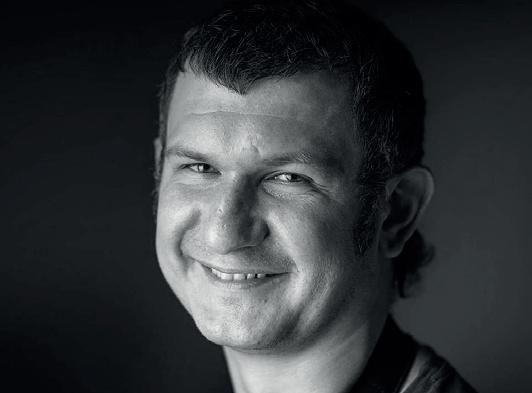
 Moscow (Russia)
Location
Alexander Vinogradov Photographer
Daria Milko Model
Moscow (Russia)
Location
Alexander Vinogradov Photographer
Daria Milko Model


Coatzacoalcos
Veracruz (Mexico)
Location


Make-Up

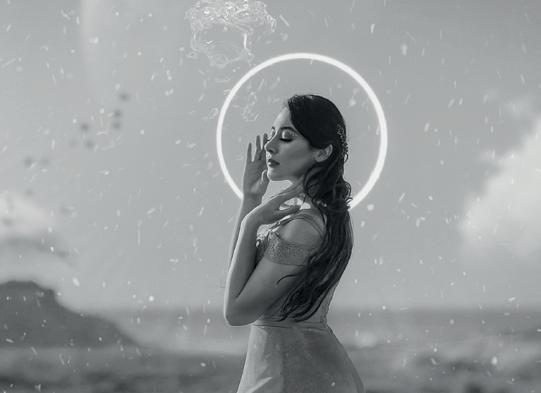 Antonio Ramsa Photographer
Ayetza Infante Model
Lirio Pérez
Antonio Ramsa Photographer
Ayetza Infante Model
Lirio Pérez



 Rovigo (Italy)
Location
Antonio Bellan Photographer
Giulia Beltrame Model
Rovigo (Italy)
Location
Antonio Bellan Photographer
Giulia Beltrame Model




Make-Up





 Location
Johnny Fusca Photographer
Sofia Pedrazzoli
Model
Sofia Pedrazzoli
Location
Johnny Fusca Photographer
Sofia Pedrazzoli
Model
Sofia Pedrazzoli
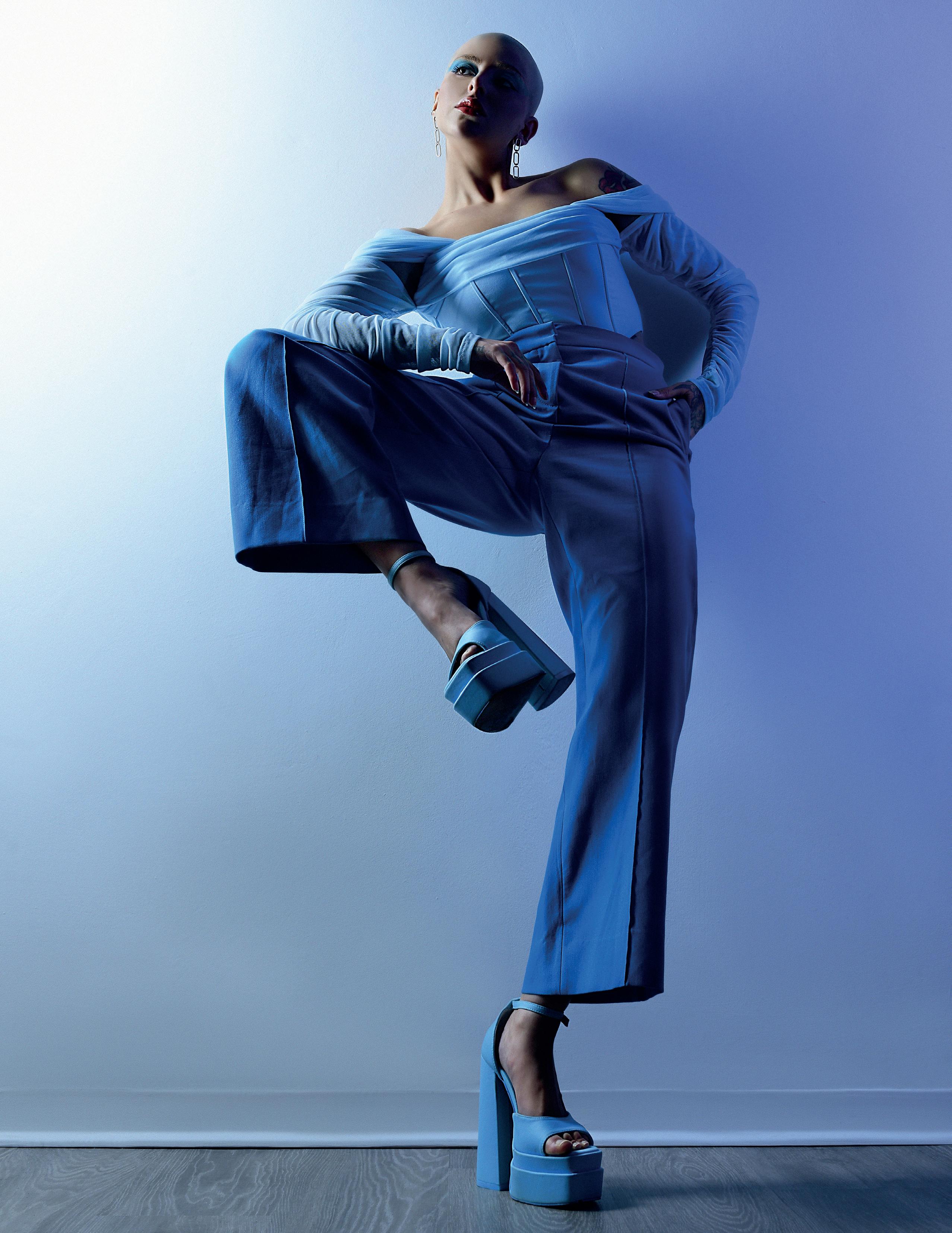




 Milan (Italy)
Location
Mariella Mesiti Photographer
Comfort Kisiwaa Model
Milan (Italy)
Location
Mariella Mesiti Photographer
Comfort Kisiwaa Model



 Udine (Italy)
Location
Patrizia Burra Photographer
Daz 3D Software
Udine (Italy)
Location
Patrizia Burra Photographer
Daz 3D Software


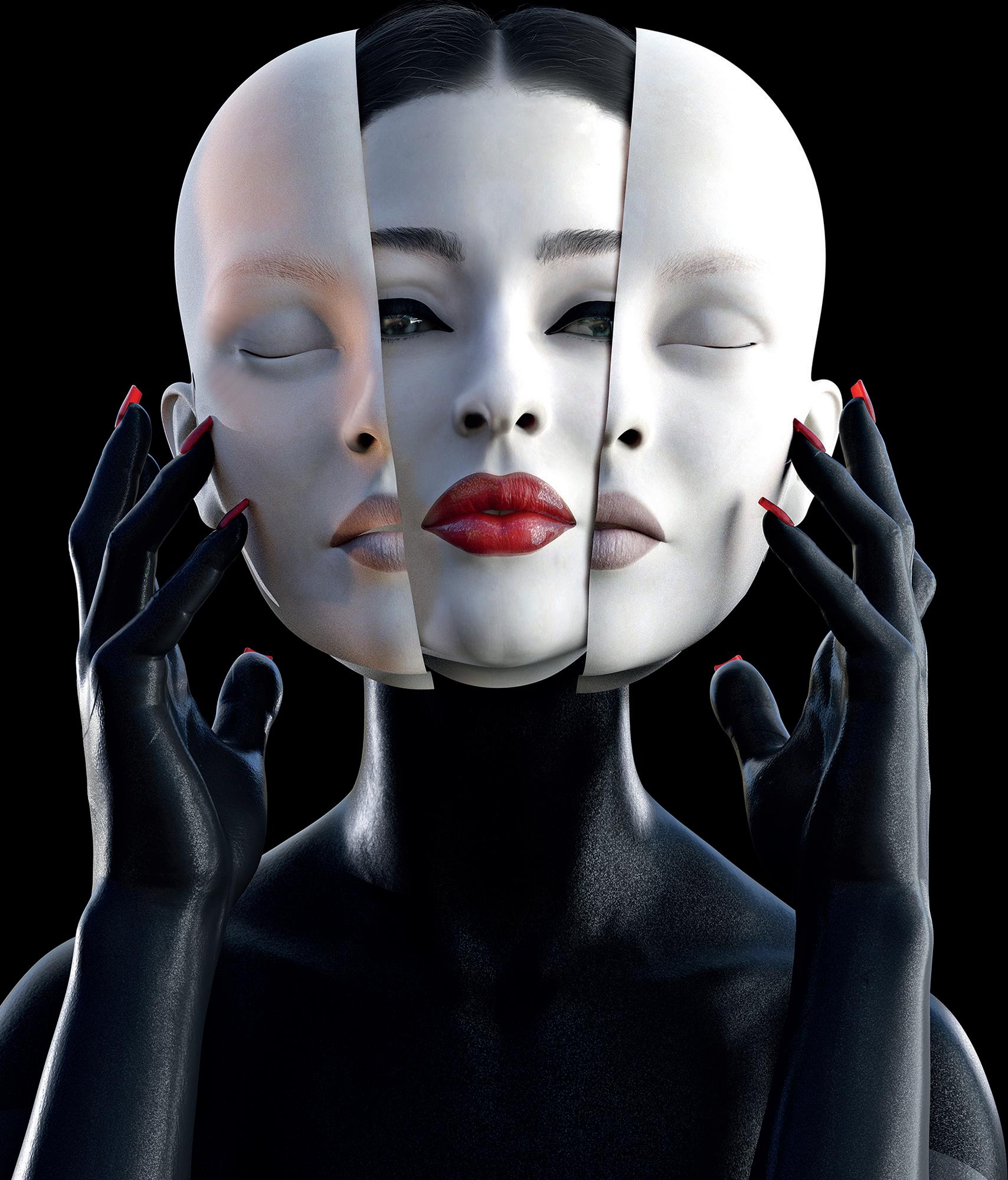
Continued from page 26
England, 17th November 1558. Behind the heavy doors of a prison tower, a young woman is offered the highest seat of the State, the throne that had belonged to her father, her halfbrother and her half-sister. The throne to which, before her, few other women had dared to aspire.
She is offered to reign over the State that had considered her dangerous and, therefore, imprisoned her; on the law that had ordered the death by beheading of her own mother.
A barely audible whisper rises from her slender body: “This is the Lord’s doing”. God’s and her father’s will. The young woman lifts her head upwards, while everything that had hitherto contrasted her now kneels before her. The State, the Law and the Church.
In the cold tower that had seen her as a prisoner, the stunning silence of the statesmen seals the moment. For the second time in history, a woman rises to the highest seat of the British
kingdom: Elizabeth I Tudor. Although history has unintentionally provided her an opportunity for revenge, it is widely believed, in mid-500s England, that women are not fit for power. Elizabeth knows this very well.
She has personally experienced the abuses suffered by her mother; she has seen her father tortured himself in the desperate attempt to give the kingdom a male heir, repudiating her and her sister.
We can say that, at that time, the Church is leading a real crusade against that glimmer of emancipation that is beginning to ignite in the Old Continent, forcefully claiming the most radical precepts of the Dark Ages.
Right in 1558, when the crown still belongs to Mary I Tudor, the controversial “The First Blast of the Trumpet against the Monstruous Regiment of Women” has been written, in which John Knox says he is sure that God does not approve the widespread habit to let women rule.
Indeed, Knox defines this practice as monstrously unnatural. These rants’ target is certainly queen Mary, but Elizabeth, far from the court environment and therefore even more exposed to harassment and oppression, lives this discrimination against women and lets herself be influenced.
She is influenced to the point that, once ascended to the throne, she starts a real propaganda work to validate herself and her kingdom, trying to move on her the image that the foreign people and enemies had of her father, Henry VIII. Just like her father, she finds in images the fastest and most sublime form of promotion.
In the first ten years of her reign, Elizabeth tries to shape an image of herself as worthy as possible and orders a considerable amount of portraits, in order to give a face to the character she intends to create.
The queen who raises from the portraits almost loses her feminine features,
showing that she thinks she has the body of a thin woman, but filled with the passion and tenacity of a real king.
Elizabeth’s young features gradually fade away, lost in the sumptuous flounces of the clothes she wears and which recall her father’s style; hidden by veils, jewels and symbols, until she becomes a symbol too. Genderless woman, principled queen.
Embodiment of the English people’s will and, therefore, its slave. At the cost of any carnal renunciation, any affected manners. Her body, her womanhood entrusted to the State’s sake.
Ten years after the coronation, Elizabeth is at the head of one of the most prosperous states in Europe and in the images that represent her she has assumed the features of a deity.
An emblematic example of this is a work attributed to Hans Eworth and painted around 1569: “Elizabeth I and the Three Goddesses”.


The work is a clear mention of the Greek myth of Paris’ judgment, that has many transpositions and representations.
During a feast organized by the father of the Gods, Eris, Goddess of discord, leaves a golden apple on the ground.
There is a cryptic recording on it, cause of one of the most famous disputes of mythology. “To the most beautiful”.
Atena, Juno and Aphrodite take the bait, each persuaded to deserve the apple more than the others. At Zeus’ request, the task of deciding who deserves the coveted prize is entrusted to the prince of Troy, Paris.
The Goddesses offer some of the most coveted gifts to the nicest mortal in return for the apple, but the man, bribed in the flesh, yields to the temptation of love.
The judgment of Paris rewards Aphrodite, thanks to the goddess’ promise to give him the love of the most
beautiful of women: Helen of Sparta, Menelaus’ wife.
Carnal love wins against the knowledge promised by Athena or the glory offered by Juno. Paris will pay for his weakness with death; Greece with the scourge of the Trojan war.
In an era far from the Greek myths and the Olympus of the Gods, Hans Eworth sews Paris’ myth on Elizabeth I, creating a work that appears as an alternative version of the original one.
In Eworth’s work, Elizabeth metaphorically takes on the role of Paris, but, unlike Troy’s prince, she faces the three Goddesses.
In Elizabeth version, a globe replaces the apple, which in the different representations of the Greek myth Paris offers to Aphrodite. The queen portrays the hand that’s holding the prize, symbolizing her triumph over the world and the victorious expansion of her kingdom over the enemy lands.
In Eworth’s representation, the three Goddesses are restless, overwhelmed by the woman who is facing them: Athena is silent, Aphrodite looks down redly, Juno looks at the globe in Elizabeth’s hand and seems ready to fly away.
In her proud stillness, thanks to artist’s job, Elizabeth embodies the virtues of the three Goddesses. Proof of this is the engraving on the painting frame: “Pallas was keen of brain, Juno was queen of might, the rosy face of Venus was in beauty shining bright. Elizabeth then came and, overwhelmed, Juno took flight, Pallas was silenced, Venus blushed for shame”.
With Elizabeth I and the three Goddesses the figure of the sovereign reaches the sought-after abstraction, the woman has given way to the queen. She has the face of the Nation, her virtues are the pillars of the kingdom of England.
As a queen finally aware of her power, Elizabeth finds herself again. From this moment on, the paintings that
portray the sovereign slowly deviate from her father’s memory and become a real celebration of the young woman.
Elizabeth is still represented full of symbols, but near to those of the Tudor she places elements dear to her, as references to her mother and to the queen’s professed virginity.
An emblematic representation of this further evolution of the queen’s image is the Rainbow Portrait, a work from the 1600s attributed to Marcus Gheeraerts or Isaac Oliver.
At that time, Elizabeth is by now seventy years old, but her image appears fresh and young. The queen presented through her portrait is immutable, just like Gods.
On her dress, embroideries of fresh flowers allude to the idea of youth that she intends to convey; drawn eyes and ears remind us that the queen’s fame has no boundaries.
In Elizabeth’s hands by now stands a rainbow, symbol of peace.
On the right sleeve of her dress, a snake holds a ruby in its mouth, to emphasize the wisdom and the good heart of the sovereign.
In this representation Elizabeth is the eternally young and wise queen of a prosperous and peaceful kingdom.
From the denial of her sexuality first and her own transience then, Elizabeth draws a power which, through images, she uses to define herself and confirm herself as queen.
At the highest point of her ascent, the English people look at their sovereign as a superior being, no longer despising her femininity.
Here then she returns to be a woman.
A woman who, far from her father’s games of power and from previous religious controversies, becomes the mother and guardian of an unstoppable nation. A woman capable of shaping the century with her battles and the consequent successes.
Elizabeth becomes, through the paintings, a sponsor of herself and of her goals, without needing to mark the name of the house she belongs to.
She is a woman and, thanks to the virtues she embodies, she is the worthy sovereign of England.
Ascended to the throne in the name of her father and lived in the name of the English people. Finally turned into history with her name and her worthiness.
Elizabeth I, Queen of England.
Continued from page 28
Photography pushes painting aside. Painting resists and is determined not to capitulate. This is how the battle must be interpreted which started a hundred years ago when the camera was invented and which will only end when photography has finally pushed painting out of the place it held in daily life. The photographers’ motto was: precision, speed, cheapness. These were their advantages. Here they could compete with painters. Particularly in the case of portraits. Even the most gifted painter cannot achieve the degree of faithful reproduction of which the camera is capable. Even the quickest painter cannot supply a portrait within minutes. The cheapest painting is more expensive than the most expensive photograph. After portraits landscapes were tackled, reproductions, genre pictures. And all had the same advertisement: precision, speed, cheapness. The painters recognised the danger. The success of photography was enormous. Immediate steps had to be taken. A stronger counter-attack mounted.
Cheapness and speed could hardly be fought. The camera works more cheaply and quickly. Precision can be disputed. So this was where the attack was centred.
Photography is not coloured. Painting is. This means that painting reproduces an object more faithfully and is without rival in this respect.
This is how the painters argue. And the consumer had to be convinced of this. But the painters were wrong and many are still wrong today.
It is true that in life we do see objects in colour. And a painting reproduces these objects by means of colours. But these are different from nature, not identical with her. Painting cannot transpose real colours, it can only copy -more or less approximately – a tint we see in nature. And the problem is not how talented a painter is, but is basic to the very nature of his or her work. The colour media with which a painter works (oil, watercolour, size) have a different effect on our eyes than the rays of light which give diverse colours to objects. [...]


[...] The photographer wants to attain the social recognition which the painter enjoys. This is a perfectly normal wish. But it is not fulfilled by the photographer following the painter, but rather by his opposing his own art to that of the painter. If the photographer follows the main principle of his craft, which is the ability to capture nature faithfully, he will as a matter of course create things which will have just as strong an effect on the spectator as the painting of an artist, whoever he may be.
The photographer must show that it is not just life ordered according to aesthetic laws which is impressive, but also vivid, everyday life itself as it is transfixed in a technically perfect photograph. By battling against the aesthetic distortion of nature the photographer acquires his right to social recognition, and not by painfully and uselessly striving to imitate models alien to photography.
This is not an easy path, but it is the only true one. It is not easy because neither here nor in the West is there even the beginning of a theory of the art of photography, the art of how to make highly accomplished photographs. All that is being written or said on the subject is reduced either to a series of technical tips and prescriptions or to hints on how to achieve painterly effects, how to make a photograph not look like a photograph.
And yet some artists and painters do exist who have abandoned painting in favour of photography; people who understand that photography has its mission, its aims, its own development; there are some among them who have already achieved certain results in this field.
What is needed is that these people somehow exchange their views, tell each other of their experiences, unite their powers in a common effort, a common battle against the painterly element in photography and towards a new theory of the art of photography which is independent of the laws of painting. The experiences of those people who have previously been painters are particularly interesting in this context. [...]
Osip Brik, in Sovetskoie Foto, no. 2, 1926.
Art in theory 1900 - 2000
edited by C. Harrison & P. Wood

Continued from page 30
(Fëdor Dostoevskij)
Beauty will save the world because for the most part it comes from creativity and so, from (creative) minds that are the product of a keen interest and involvement in the world of culture and all that it has to offer.
Think about LEGO for a moment. With a mountain of bricks in front of us but strangely all in the same shape, size and colour, we’d have no problem at all in building something on an impressive scale, yet in terms of our capacity of expression we’d find our hands severely tied.

Put a vast range of pieces at our disposal, and we’d see ideas coming together with only one obstacle in their way to becoming a reality: our creativity. This quality is in fact nothing other than the extent to which our minds are capable of acquiring, linking and combining elements (bricks) that differ in nature and shape.
Now imagine replacing Lego with culture, and, instead of bricks, having inspiring events to work with. Here too, we’d find that the quality of the ideas that we come up with is very closely tied in with our own creativity and, therefore, with the very many different aspects of our involvement in a range of experiences that we’re able to draw on.

Continued from page 32
Martin’s style mixes typically commercial aesthetic beauty with a darker and more mysterious world. Through his works, he wants to suggest stories that remain imprinted in the mind and of which the viewer feels a part of, almost like a co-author. For this reason he never attaches a description to his images and leaves the observer to interact, extracting and completing the meaning of the work through his own imagination.
Martin has always experimented in his life, since the days of analog photography, aware that there is always something new to learn and lately he is dedicating himself to the infinite possibilities offered by artificial intelligence.
AI offers many more opportunities in creating images than a traditional camera, using the most disparate styles, then integrating the result with traditional photo editing tools, such as Photoshop.
Unlike some of his colleagues, Martin doesn’t view AI-powered software as a “bad thing.” It improves his resources, expands its possibilities and it’s fun too! It is the frontier of a new world, fascinating though still almost unexplored.
However, communicating with an artificial intelligence is not (for the moment) so simple and intuitive, contrary to what most people might think. The AI used by Martin requires textual input (preferably in English) and each word can have different meanings in different contexts. The algorithm cannot guess, but it needs precise instructions on what to do and how to do it. Terms that are synonymous in real life can lead to very different results so, in the beginning, there is a long experimentation phase. Online tutorials and participation in fan communities can be a good starting point.
Interacting with artificial intelligence is therefore today more similar to a writer’s job than to that of a photographer or an image editor. Post-production takes place later, since today an image generated (for example) by Midjourney (one of the most popular AI-powered software for creating images starting from textual descriptions) must subsequently be modified and refined due to its quality, still partially raw. But technology evolves very quickly! New versions of dedicated software are released frequently, with a huge qualitative progression. The results will always be better, faster and faster!
We are therefore at the dawn of these technologies and we look to the future with curiosity and optimism, aware that already now we can translate almost everything that our imagination can create into images, choosing the style (photorealistic, pictorial…) and drawing inspiration from many famous artists.




My inspiration for this was a quote by Alexander McQueen: “everything is fashionable”. So my intention was to create a “fashionable” setting of some old motor parts and scraps.
My main problem with this was the word “motor”... always too big, “blobby” and definitely NOT stylish. So I began to write down what I wanted to see in detail (cables, feathers, ducts, etc) resulting in total chaos. For example, “feathers” are “bird feathers” for an AI. So I had to change lots of words until the final result!
The picture was (also) made in Midjourney’s Beta/V3 phase.
Martin Wagner“Everything is fashionable”
Alexander McQueen
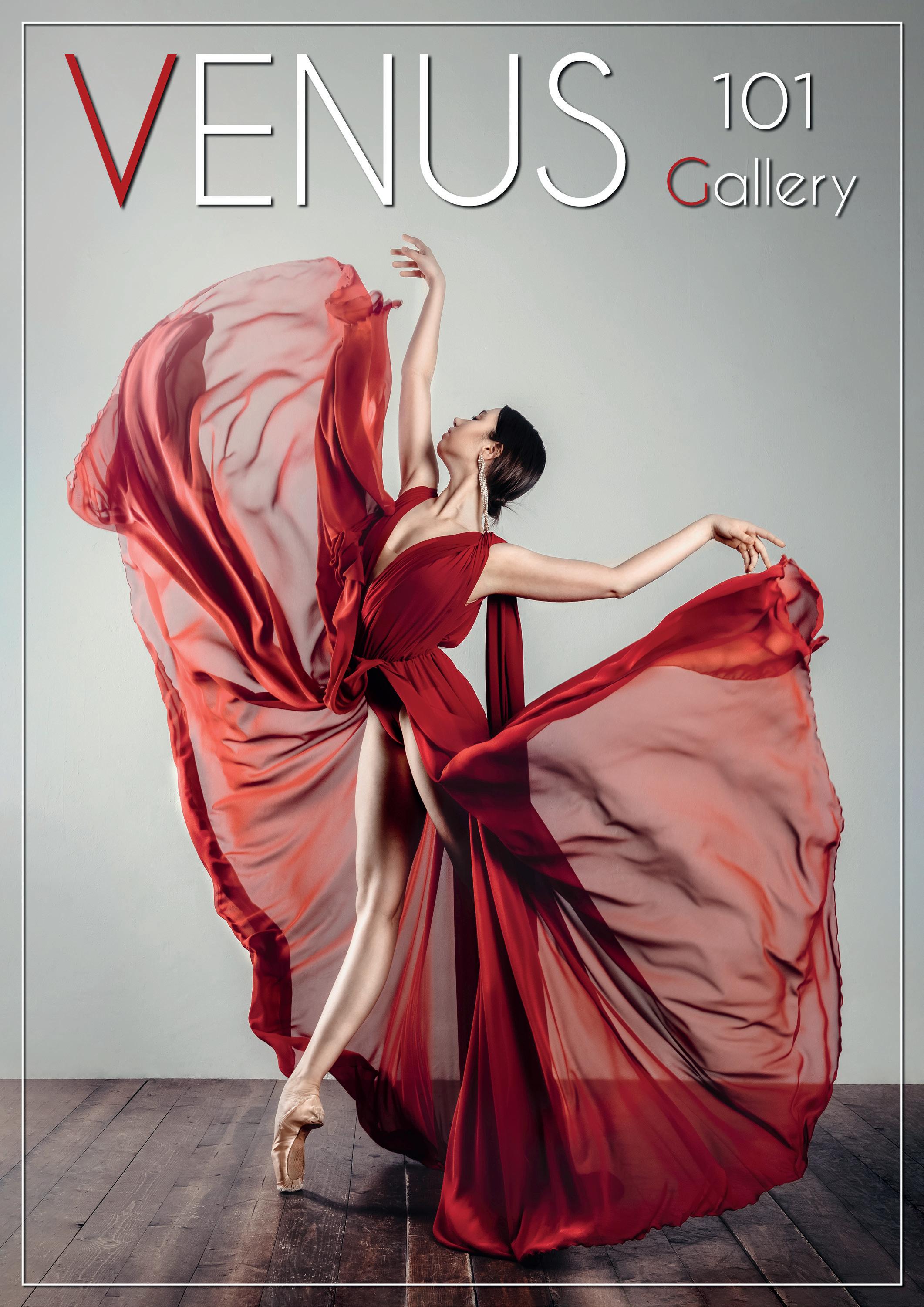
Continued from page 34
Culture isn’t a form of entertainment restricted to a limited few. It isn’t an area dominated by an élite, nor is it a hat that we put on in order to show the world just how smart we are. It isn’t a diploma or a certificate that gives others an idea of just how many museums we’ve visited, or how many books we’ve read. Above all, it is not a pedestal from which to look down on others with some sort of sense of superiority.
Yet all too often we come across examples like these.
When we talk about culture, we refer collectively to manifestations of the excellence of human intellect - spanning art, science, design, photography, etc… - that are all ranked on an equal footing.
There’s no longer any call for an ‘A’ class and ‘B’ class distinction. The choices that we make should be driven by our own interdisciplinary curiosity alone and not by outdated classifications and contrasts between what we often referred to as highbrow and lowbrow culture.
The good news is that this democratisation process is underway and it’s clearly shown by some visionary views like these:
A journalist and broadcaster from London - Pandora Sykes - wrote in an insightful article on the Pirelli calendar phenomenon that “to dismiss it as a collection of ‘pin-ups’ would be to misunderstand its role and its cultural weight … the Pirelli calendar may have begun as a homage to world-famous beautiful women, but it has long segued into a destination for impactful storytelling and progressive thinking”.


An italian architect - Massimiliano Fuksas - once said in an interview that if his source of inspiration had been limited to architecture alone, he may well have simply spent his time creating poor copies and re-hashed designs of buildings constructed in the past, albeit with new materials.
When Leonard Bernstein heard someone applauding at the wrong point during a concert (thereby committing the worst of all offences in the world of classical music!) rather than displaying the snob’s approach that sees culture confined within its elitist boundaries, he instead cried out: “at long last, we’ve got someone new in the audience!”.
Well, imagine what the world would be like if the innovative and openminded approach shown by Sykes and the crossdisciplinary and cultural curiosity like that demonstrated by Fuksas were encouraged on a regular basis by receiving the warm welcome offered like Bernstein’s!
Culture would no longer be regarded as an end in itself, but as a never-ending source of life-enriching opportunities and experiences that our creativity could combine and re-combine in order to produce quality ideas and useful solutions.
This is the vision behind VENUS Gallery: a platform (not just a magazine) contributing to unveiling that beauty is the tip of a huge (cultural) iceberg which has the potential to become an engine for the economy, society and innovation!

Continued from page 35
More than 25 years ago Sun Microsystems coined the motto: “The network is the computer”.
They came up with it in the era of the early introduction of stand-alone, non-networked PCs. Many couldn’t comprehend what SUN was talking about. To them the computer was the new beige 386 sitting on their desk running Windows.
Nowadays we can say, not only that that brilliant intuition has somehow come true with the advent of the cloud computing, but that in such a short time their lively imagination has been overtaken by the reality: the network is each of us (rather than just the computer).
Technology is now so good that you can really go beyond your own limits.
The internet(s), artificial intelligence, 3D printing, broadband connection, wireless, smartphones, tablets, social networking etc, are driving a social revolution. By interacting with a
network of people with different backgrounds, cultures and talents, you can came up with great ideas, develop complex projects and find innovative solutions.
As with all great innovations, they eventually become commodities. Put simply, we can define a commodity as something that is very useful, even indispensable but that you can somehow take for granted.
What does it mean? Only when energy became a commodity did computers emerge and when the computer became a commodity we then had the Internet.
In turn, when the Internet became a commodity it heralded the arrival of the so-called Web 2.0 era. Now, as social networking becomes commodified, we are laying the foundations for the next opportunities to emerge.
In this context we started VENUS Gallery: a magazine focused on what we like to call Woman-centered art photography.
The mission is two-fold. On one side, we intend to reaffirm photography centred on female figure - and developed according to all formsas an artistic and cultural phenomenon; on the other side, we want to lay the foundations to wider the VG horizons through a new editorial project dealing with 360 degree beauty: SHINY Media (www.shiny.media)
The link between the 2 projects is provided by the following observation: the female figure has always been the most popular and loved subject in the history of art. However, what really matters isn’t the abundant works of art produced around women but their natural ability to go well beyond the stories that artists were supposed to represent and become a way to tell the history of the entire world.
The Venus of Milo, Botticelli’s Birth of Venus, Leonardo da Vinci’s Mona Lisa, Picasso’s Demoiselles d’Avignon or Andy Warhol’s Marilyn are just some examples we can do to see it into practice.
That’s why we regard VENUS Gallery as the perfect introduction for SHINY Media.
The thinking behind SM is to provide an innovative forum in which to acknowledge and apply the principle that dictates the existence of a powerful relationship between culture, creativity and quality of ideas.
The magazine for everyone that’s created by everyone, SHINY Media employs technology and multimedia to put its content under the spotlight in a high-gloss arena.
SHINY Media tackles topics which, on much the same lines as the Lego bricks that come in a multitude of shapes, sizes and colours, embrace art, design, literature, cinema, music, science, history and much much more besides.
Our doors are open to anything, as long as the stories told and contributions submitted are sufficiently dynamic and brimming with energy to inspire our readers and enrich their lives and minds.
A unique collection of images to affirm the artistic and cultural value of woman-centered art photography.

A unique collection of images to reaffirm the artistic and cultural value of the best of photography.
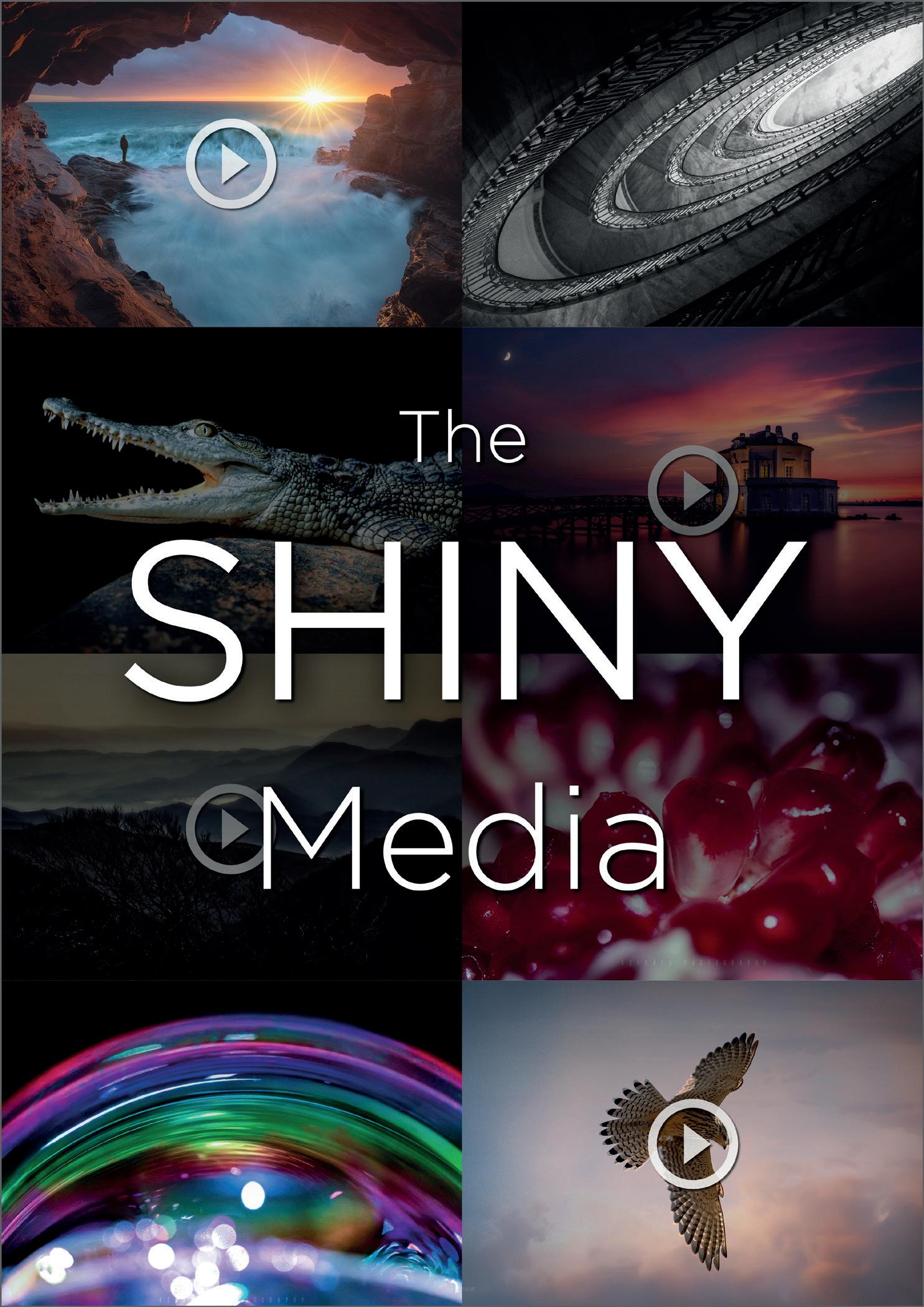
“We respect everyone and everything, from people to rules, but not the status quo. There is always a margin for improvement and we love the surge of adrenaline springing from the opportunity to push the envelope.”
The VENUS Gallery Team
